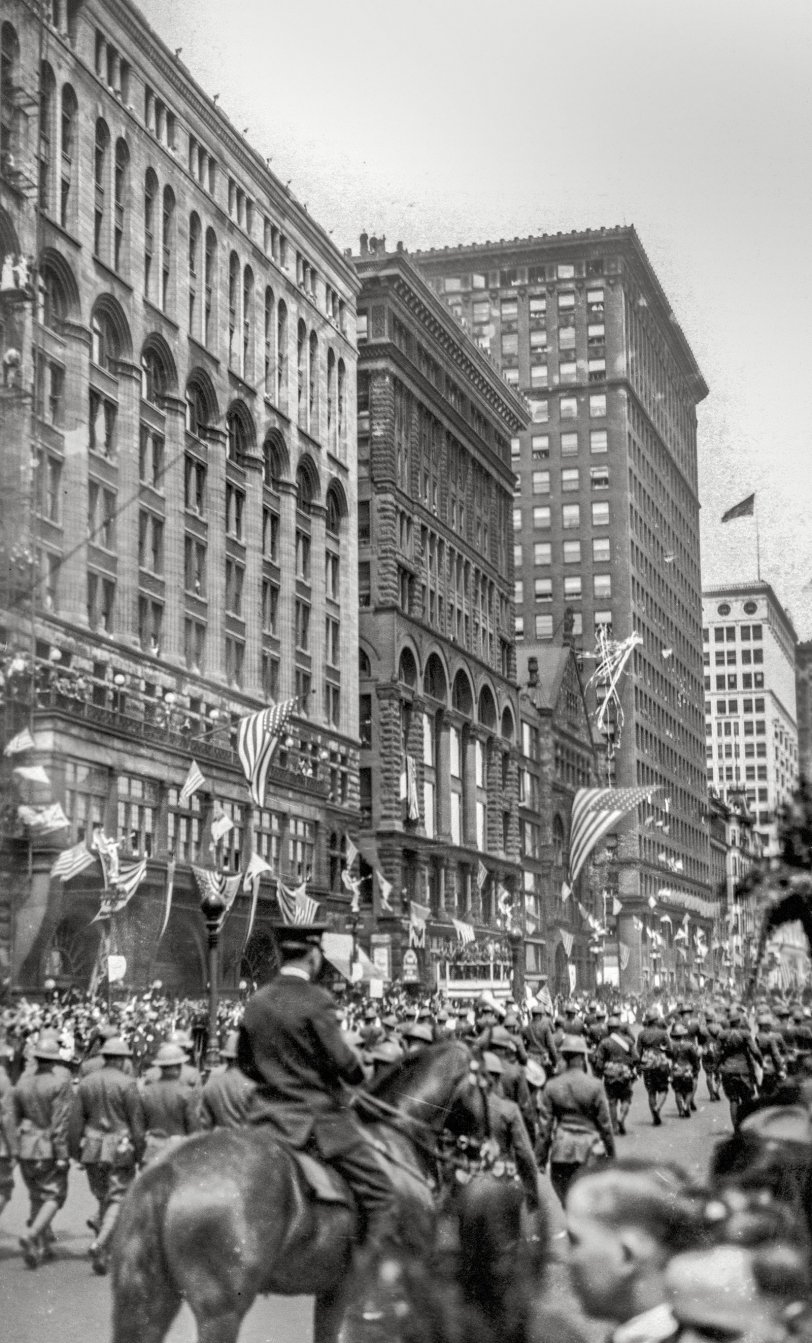


Framed or unframed, desk size to sofa size, printed by us in Arizona and Alabama since 2007. Explore now.
Shorpy is funded by you. Patreon contributors get an ad-free experience.
Learn more.

- Texas Flyer wanted
- Just a Year Too Soon
- WWII -- Replacing men with women at the railroad crossing.
- Yes, Icing
- You kids drive me nuts!
- NOT An Easy Job
- I wonder
- Just add window boxes
- Icing Platform?
- Indiana Harbor Belt abides
- Freezing haze
- Corrections (for those who care)
- C&NW at Nelson
- Fallen Flags
- A dangerous job made worse
- Water Stop
- Passenger trains have right of way over freights?
- Coal
- Never ceases to amaze me.
- Still chuggin' (in model form)
- Great shot
- Westerly Breeze
- For the men, a trapeze
- Tickled
- Sense of loneliness ...
- 2 cents
- Charm City
- What an Outrage
- Brighton Park
- Catenary Supports
Print Emporium
Heroes' Welcome: 1919

Chicago, May 12, 1919. "Return Parade for the 13th Railway Engineers, Michigan Boulevard." View full size. For another view, click here.
Thirteenth Engineers Returns to Chicago. The greatest reception given to any organization of returning soldiers at Chicago was given to the 13th Railway Engineers on May 12. Its welcome to its home town was unequaled in point of enthusiasm and spectacular expression in the after war history of the city. Approximately 100,000 people banked Michigan Boulevard on both sides and maintained a bedlam of noise as the regiment paraded in platoon formation. Employees of the six railroads centering in Chicago from which the 13th Engineers was mainly recruited were organized in groups along Michigan Boulevard to welcome the men.
-— Railway Age and Railway Review, 1919
During World War I, the regiment known as the 13th Engineers consisted of personnel from the six largest railroads that ran through Chicago; it operated about 142 kilometers of French railways, serving the Verdun-St. Mihiel, Champagne-Marne, and Meuse Argonne sections. The scan is from a family photo album titled "My Vacation Days," with dates ranging from 1914 to 1922.
Delayed Return
I wonder if they really took this long from the end of the war to get back or if their skills were so sorely needed post-armistice that they had much work to do getting European railroads back into action again.
[It's the parade that was delayed. Because Chicago winters. - Dave]
Marching Orders
The Michigan Avenue marchers are rapidly approaching the intersection of Michigan and E. Van Buren Street which would have crossed right in front of the tallest building in the picture to the left.
Except for the gabled building (4th from left-front) which has been replaced with a building which respects the design of the other two buildings to the left, all those buildings exist today, including the small 5-story building which now has a remodeled facade.
At the time of this parade, there would have been a railroad switch yard between Michigan Avenue and a much smaller Grant Park. The tracks were subsequently lowered and covered over to make a much larger Grant Park which now borders Michigan Avenue.
























On Shorpy:
Today’s Top 5